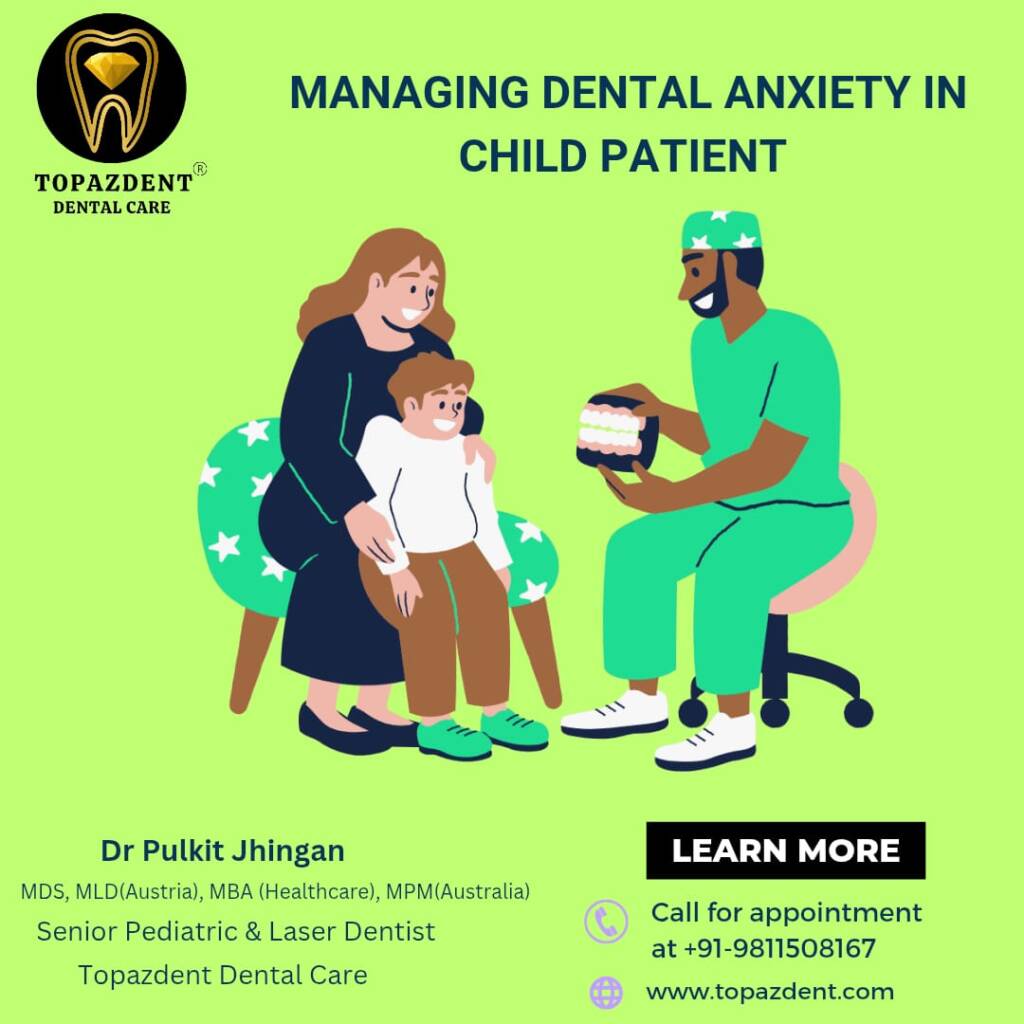
The British Dental Journal looked into the subject, revealing that dental anxiety in children is prevalent and causes fear and avoidance of vital dental treatment. Many children are unfortunately scared of their dentist visit — at Topazdent Dental Care, we know that we need to work with that fear and turn it around so children can get the dental healthcare they need without the stress. This guide will study effective techniques the consequences of anxiety in children and ideas that can help to make the process as stress-free as possible at the dental practice and in the first days after dentistry, discussing options for dental sedationранения and the latest technologies in pediatric sedation.
The Science Behind Child Dental Anxiety
There are many contributing factors that can lead a child to have dental anxiety, including:
- Fear of pain.
- Negative past experiences.
- Fear of the unknown.
- Affectation by peers or family members.
Identifying these symptoms early is key to keeping your child from developing an enduring aversion to dental care.
My Tips as a Parent — How to Overcome Dental Anxiety in Kids
1. Start Early
Take your child to the dentist by their first birthday — or sooner, if they can find a dentist with a friendly face and gentle hands. Initial visits, in turn, help establish trust and familiarity.
2. Be Positive
Speak positively about dental visits. Do not use terms like “pain,” “hurt,” or “shot.”
3. Role Play
Engineered to cope with a dental visit with role-play at home to help your child understand what will happen.
4. Pick a Dentist Who Is Good with Kids
Choose a pediatric dentist who has experience with fearful kids. A friendly face and kind heart can go a long way.
5. Distraction Techniques
Bring along your child’s favorite toy, book or music to help distract them during the visit.
6. Reward Good Behavior
After completing a dental visit, reward them small to create a positive association with dental care.
1. Advanced Approaches in Controlling Dental Anxiety
1. Tell-Show-Do Method
This is where you explain what you’re going to do, do it, then do it — they’re going to need to have understanding and control when it comes to feeling.
2. Behavioral Reinforcement
Praised and encouraged, they remain calm and cooperative during dental visits.
3. Cognitive–behavioral therapy (CBT)
Cognitive Behavioral Therapy (CBT): CBT is a common therapeutic approach to treat anxiety, and it can reduce anxiety by improving the way that a child thinks about a dental visit.
Options for Children with Anxiety
Sedation can help child with with severe dental anxieties to get the necessary dental treatments safely and effectively. Here are some common options for sedation:
1. Nitrous Oxide (Laughing Gas)
Nitrous oxide, also called laughing gas, is a mild sedative that is inhaled through a mask. It relaxes children, without deep sedation. The effects fade quickly, enabling the child to return to normal activities soon after the procedure.
2. Oral Sedation
Oral sedation uses medications to relax children. This is useful for the more anxious children and allows them to be awake but relaxed throughout the procedure.
3. General Anesthesia
General anesthesia may be suggested for extensive dental work or in cases of extreme anxiety. This is performed under total anesthesia, meaning that the child does not experience pain or distress during the procedure. Though, general anesthesia is conducted under the supervision of the trained anesthesiologist and thus is known to be safe.
4. IV Sedation
For children who need moderate to deep sedation, intravenous (IV) sedation is also an option. This is always carried out by a qualified professional and helps dentists complete lengthy procedures in an efficient manner.
Topazdent Dental Care to the Rescue for Anxious Kids
For us at Topazdent Dental Care, we understand the importance of making thet each appointment is free from stress and as comfortable as possible for each child. Our approach includes:
- A caring, family-friendly atmosphere.
- Behaviour management training for paediatric dentists
- Advanced sedation options customized to each child’s needs.
- Full pre-visit counselling to overcome parental concerns.
Conclusion
The goal is to manage dental anxiety in children so they still have healthy teeth throughout life. Dental visits can be stress-free and even positive experiences by identifying where fears stem from, implementing behavioural strategies, and utilising suitable sedation. At Topazdent Dental Care, we pride ourselves in providing gentle treatment and tailored dentistry for each individual. Contact us today for an appointment and let us guide your child on the path to a brighter, healthier smile.
References
- American Academy of Pediatric Dentistry. (2023). “Behavior Guidance for the Pediatric Dental Patient.” Retrieved from https://www.aapd.org
- Mayo Clinic. (2022). “Sedation Dentistry for Children.” Retrieved from https://www.mayoclinic.org
- National Institute of Dental and Craniofacial Research. (n.d.). “Child Dental Anxiety and Behavior Management.” Retrieved from https://www.nidcr.nih.gov
- Colgate Oral Care Center. (n.d.). “Helping Your Child Overcome Dental Anxiety.” Retrieved from https://www.colgate.com
- Cleveland Clinic. (2023). “Nitrous Oxide and Sedation Dentistry.” Retrieved from https://my.clevelandclinic.org
- WebMD. (n.d.). “Pediatric Sedation: Options and Safety.” Retrieved from https://www.webmd.com

